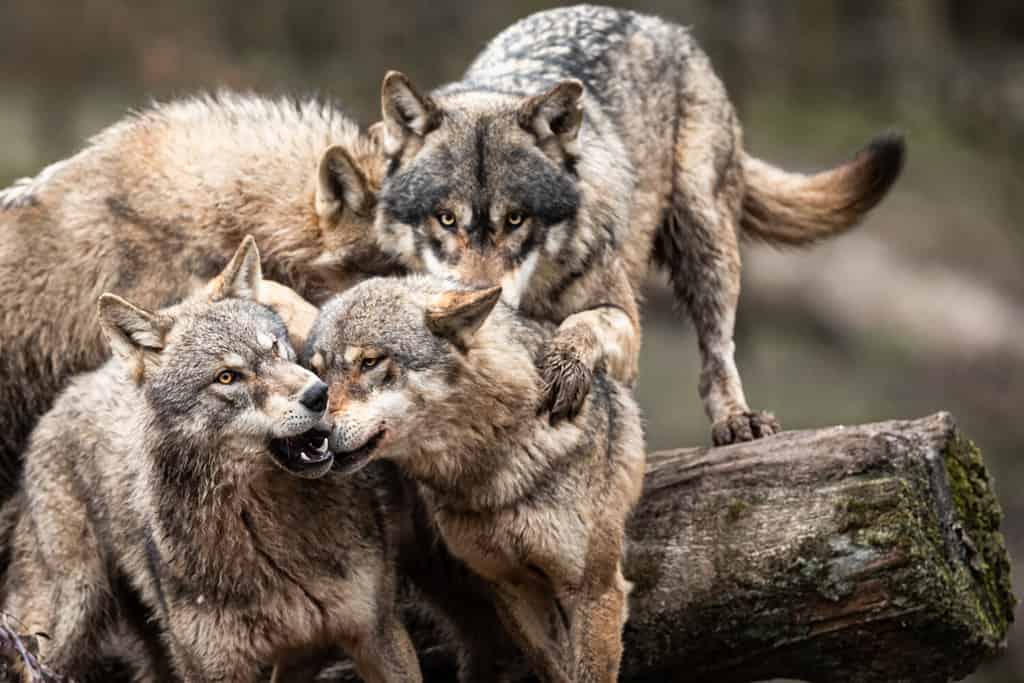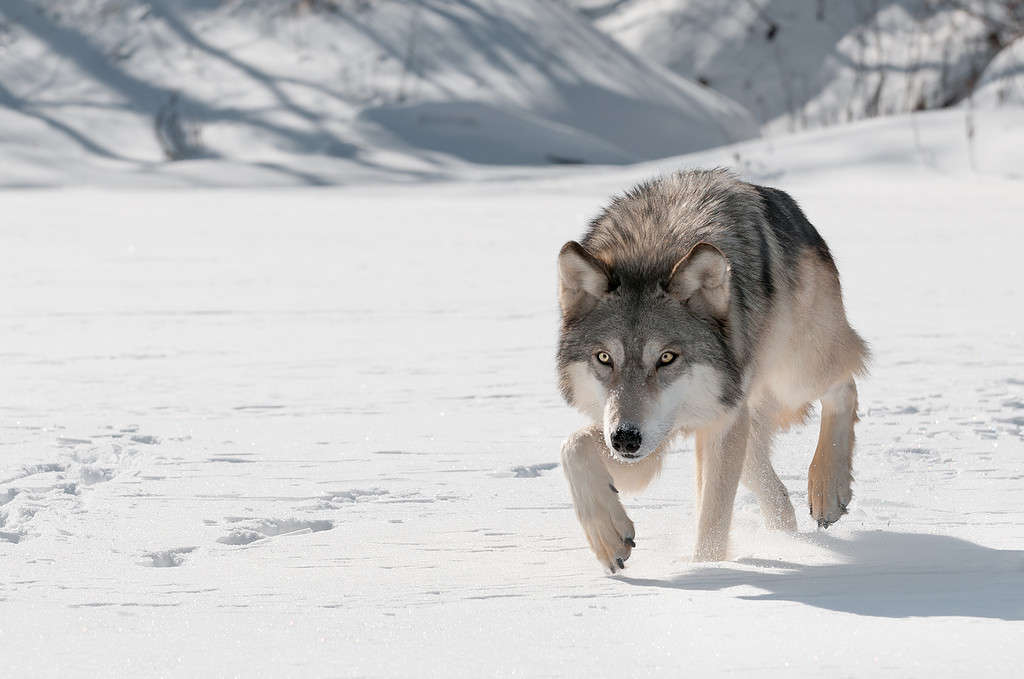Wolves inhabit thirteen states in the United States, although the majority of the country’s wolf population lives in Alaska. Wolves were formerly widespread across the United States, although they became extirpated in many states. One such state was Oregon, with wolves completely disappearing from the area at one point. However, they have since made a comeback due to recolonization from other states. Keep reading to learn about the history of wolves in Oregon and how many live in the state today!
History of Wolves in Oregon

Wolves were hunted to extinction in Oregon by 1947.
©Alan Jeffery/Shutterstock.com
Although wolves were once widespread across much of the United States, including Oregon, they were also once completely extirpated from the state. Following a government bounty to eradicate them, wolves last appeared in Oregon in 1947. The first bounty was established in 1843, with incentives ranging between $5 and $20 for killing a wolf. Over the next 100 years, wolves were continually hunted until they were eradicated.
However, after being completely absent from the state for approximately 50 years, wolves managed to make a comeback in Oregon, returning in the late 1990s. Progress was slow, though, as when a lone wolf was spotted within the state’s boundary it was captured and returned to Idaho where it had come from. Eventually, wolf sightings within Oregon increased, and by the mid-2000s, it was clear that wolves had entered from neighboring states and established a pack in the northeastern region. However, the first litter of wolf cubs confirmed in the state were not born until 2008.
How Many Wolves Are There in Oregon?

Although once extirpated from the state, there are now almost 200 wolves in Oregon.
©AB Photographie/Shutterstock.com
There are currently approximately 175 to 200 grey wolves in Oregon. The latest wolf count in the state, at the end of 2022, recorded 178 wolves, although officials state that the actual number is likely to be higher. This is a slight increase on the figures from the two previous years, which recorded 175 wolves in 2021 and 173 in 2020.
Today, Oregon’s wolves are spread across approximately 30 packs, with the majority being located in the northeastern region. However, there are also some packs located in the eastern and central regions.
Wolves are extremely adaptable animals and are able to live in a wide range of habitats. However, gray wolves do tend to prefer forested wilderness areas which offer both a good source of prey and plenty of cover. This is one of the reasons that a large percentage of Oregon’s wolves live in the northeast. However, there is now a high population density of wolves in that area. This results in a gradual expansion of their range as packs begin to establish in new areas of the state.
Wolves remain a federally protected species due to their endangered status. However, they are no longer considered to be a state-endangered species.
What Do Wolves Eat?

Wolves are a keystone species and are vitally important for maintaining a good predator-prey balance within the state.
©Holly Kuchera/iStock via Getty Images
Wolves are highly important to the ecosystem as they are considered to be a “keystone species.” A keystone species is a species that many of the other species of plants and animals within that ecosystem rely on. Without it, the ecosystem would not function in the same way, often leading to drastic consequences.
Wolves impact the ecosystem because of their ability to prey on a wide range of animals. However, the majority of their diet consists of large ungulates — moose, elk, and deer. Wolves help to keep the populations of these animals in check, therefore maintaining a good predator-prey balance within the state. Without wolves to keep these animals in check, populations may become too large and then they may be at risk of over-browsing areas. Over-browsing can lead to a shortage of food, which can eventually lead to animals starving.
Are Wolves Dangerous?

Wolves are not typically dangerous to people, although you should always back away if you see one.
©AB Photographie/Shutterstock.com
Wolves are typically very shy and elusive animals, preferring to avoid contact with humans wherever possible. They are not typically dangerous to humans, and there are no documented incidents of a wolf attack in Oregon. However, there are two recorded incidents of wolves approaching people who were hunting deer, in 2017 and 2023. Both of these incidents resulted in the wolves being shot as a means of self-defense. If a wolf does approach you, then it’s important to remember not to run away. Instead, you should remain calm and back away slowly.
Although wolves are not a major threat to humans, they do pose a greater risk to livestock. Attacks on livestock do occur, particularly during the winter months when food is scarce. However, farmers are encouraged to take steps to minimize the chance of an attack occurring. This includes using measures such as livestock guardian animals and security lights, as well as removing sick or injured animals from the pasture immediately.
The photo featured at the top of this post is © slowmotiongli/Shutterstock.com
Thank you for reading! Have some feedback for us? Contact the AZ Animals editorial team.






